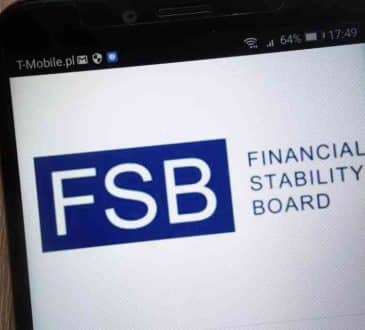3 Myths, 2 Companies, and 1 Difference That Can Delight or Dismay Your Customers

Though most complaints about air travel start at 30,000 feet these days, I recently experienced an airline snafu at ground level. The experience with this premier airline – and one I had with another premium brand – gave me an education on the current whipsaw state of customer satisfaction. These lessons, though relevant to me in my personal life, are principles that any company of any size will want to adopt if they care about satisfying and delighting their customers.
First, a quick story to help us gain altitude on this subject.
I have been a loyal customer of Emirates Airlines since 2015, and spend, on average, close to $20,000 per year of my own, after-tax dollars to get back and forth to the worldwide destinations it serves.
I’ve been a loyal advocate of Emirates, and for good reason: They fly modern aircraft, offer in-flight service that is second to none, and make me go out of my way to fly Emirates even when more direct flights are available.
In short, Emirates has brought fun back into flying for me.
My activity with Emirates has earned me Gold-level membership in their Skywards program – and the chance to take advantage of exclusive offers. One, which was offered in the wake of COVID-19, was a paid opportunity to upgrade to a Skywards Plus tier. For $999, I could earn a chunk of bonus points as well as 10 free passes – good for me and my guests – to their airport lounges across the network. Earlier this year, I decided to use some of my benefits, convincing a friend and her mother to enjoy the Emirates experience (again, forsaking a more direct option).
The Forgotten Program
On our way out of the U.S., we arrived at the Emirates Lounge and I cheerily informed the lounge receptionist of my 10 purchased guest passes. After a moment of confused stares, I learned that the lounge staff was unfamiliar with this program – and even after proving its existence by sharing online proof, I was forced to fork over $100 for my guests to gain access to the lounge.
This same scenario repeated itself at the lounge in our connection airport in Dubai. No program knowledge, no admission – and a growing sense of disappointment.
What followed were myriad attempts to voice my displeasure. I repeated my tale to several customer service representatives, I wrote a letter to the head of consumer affairs, and even emailed the president of Emirates, Tim Clark. At this writing, I have neither an explanation nor satisfaction that this issue won’t repeat itself.
Getting It Right
By contrast, I had a notably positive experience with Bang & Olufsen, a Danish manufacturer of high-end audio and video equipment. Hoping to upgrade my home entertainment options during the height of the pandemic, I purchased a B&O system online and had it delivered.
Though I believed I could install it myself (and indeed the instructions were well written and fairly clear), I ran into some issues that required corporate intervention. Despite B&Os limited physical presence in the U.S., I found their online service portal to be a refreshing – and reassuring – ally. It offered three convenient ways to reach customer service. Most reassuring of all, and perhaps one rarely used, was a link to share “Feedback to CEO.”
What I learned during these contrasting experiences is a lesson for any company that seeks to deliver premium products and satisfy its customers at every turn. It also reminded me of three common myths about customer satisfaction that are worth laying to rest:
- Rich and large companies do not make mistakes about customer satisfaction.
- Most customer satisfaction programs are too expensive for most companies.
- If one offers a great product, peripheral (mediocre) customer service is peripheral to overall customer satisfaction.
Let’s start by comparing and contrasting the realities of the two companies involved in my personal experiences. Both reside at the highest end of their respective industries, with customers across the globe. Both offer excellent ‘products’, second to none in their respective fields. But one has the arrogance to rest on the laurels of its product (the flight itself) and not care much about peripheral services like lounge treatment, website, ease of ticketing etc. Worst of all, they make it hard to be heard and even harder to escalate issues – even for their most loyal customers.
B&O, on the other hand, makes it super simple for any customer to get immediate satisfaction – even offering access to its CEO in an upfront and straightforward manner. This latter point is truly a difference-maker. It made me feel confident that I have access to the C-suite, just in case. And, I am sure, this also sends a message to the service staff that the CEO is willing to be an active participant in service assurance and customer satisfaction.
There are a few lessons to take away from these tales that represent steps that ANY company can take and implement, regardless of size or market:
The greatest driver of customer satisfaction is not how good the product is or how infrequently it fails. It is how the company responds to failures. Best companies use any customer fails as an opportunity to rebuild even deeper customer loyalties.
Companies that make truly great products are, ironically, at greater risk of providing inferior service. Product arrogance is not a myth. Thus, if you make a great product, put in extra effort to make sure your service matches your product in quality, and not in arrogance.
Making it easy for customers to reach the customer service department is a no-brainer. Providing easy access to the C-Suite as a backstop is a simple, low-cost way to show that the company leadership is on their ‘customers’ side’.
More than 60 percent of customers will switch their allegiances as a response to poor customer service. You’ve worked so hard to earn your cachet as a premium-product company – it’s essential to deliver a customer experience that measures up to expectations and protects your hard-earned investment in your brand.
Written by Atul Minocha.
Have you read?
Interview with Michael Given, Head of Sales at Hopp.
More CMOs Being Called to Power Growth, Drive Near-Sales by Pete Hayes.
Are You a Good Fit for a CEO Forum by Leo Bottary.
4 Ways CISOs Can Prove Their Worth to Other C-suite Members by Rhett Power.
New Study Shows Managers are Changing Their Minds About the Hybrid Work Model by Dr. Gleb Tsipursky.
Add CEOWORLD magazine to your Google News feed.
Follow CEOWORLD magazine headlines on: Google News, LinkedIn, Twitter, and Facebook.
Copyright 2024 The CEOWORLD magazine. All rights reserved. This material (and any extract from it) must not be copied, redistributed or placed on any website, without CEOWORLD magazine' prior written consent. For media queries, please contact: info@ceoworld.biz








